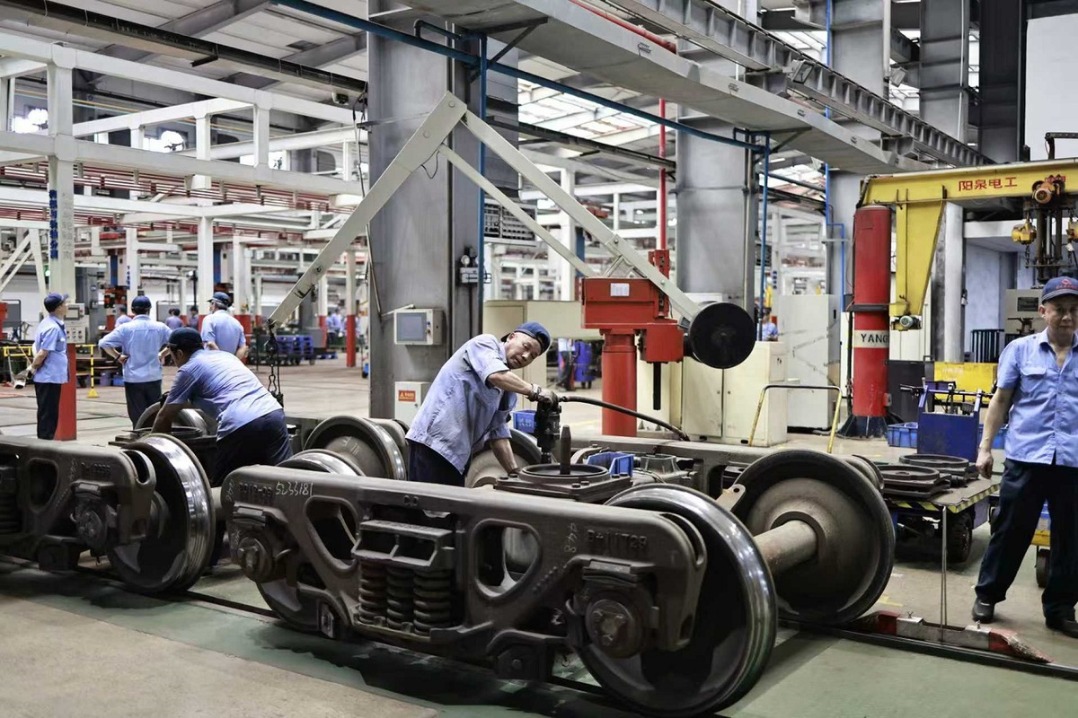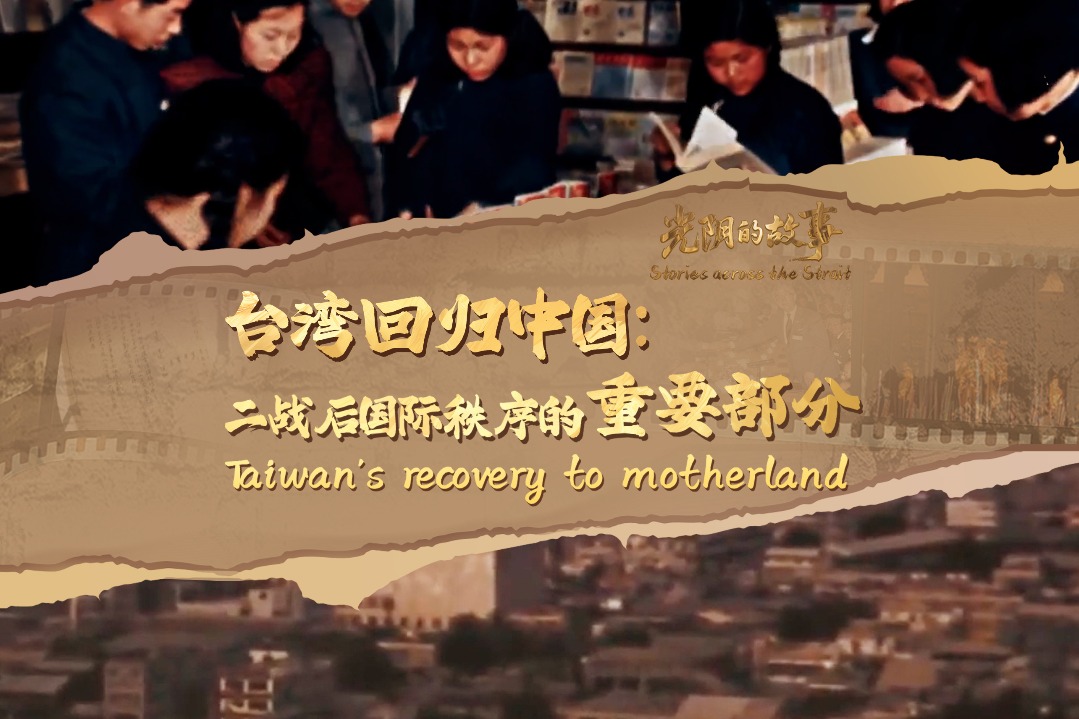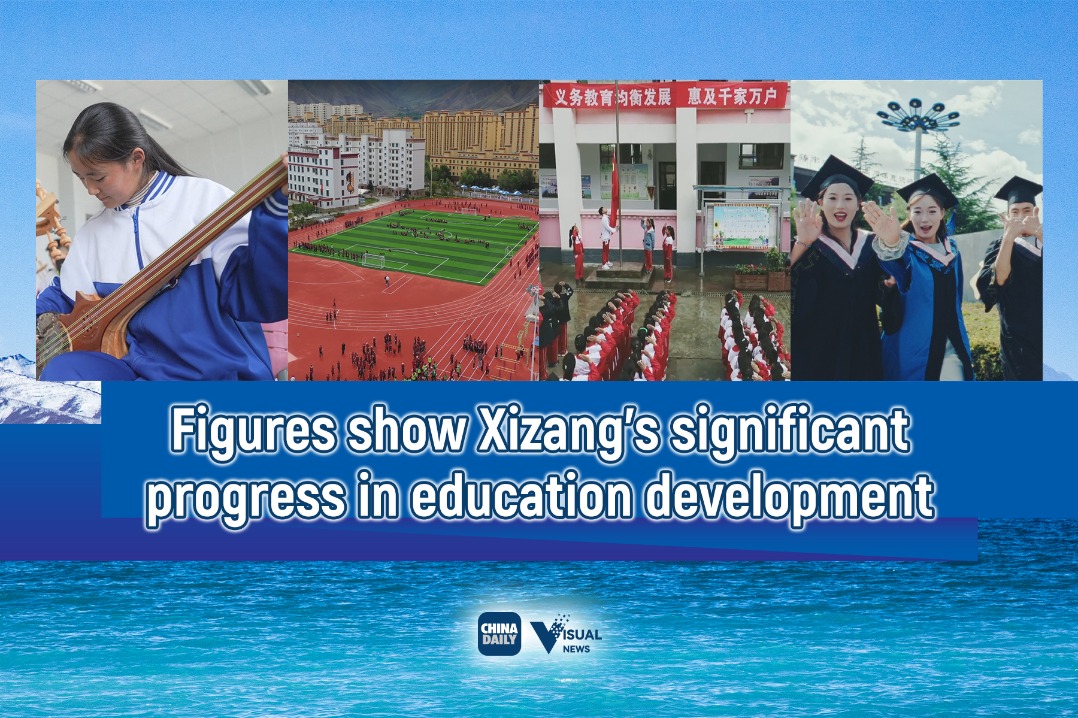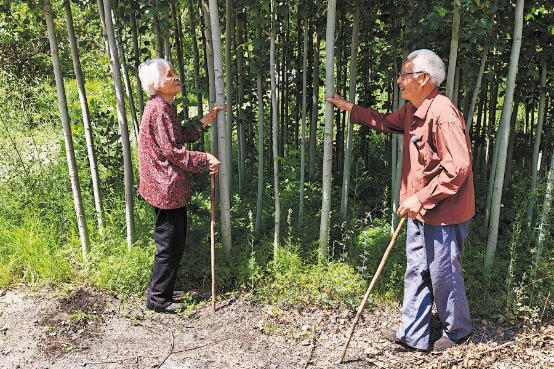Report urges migrants' skill development
Rise in workers age 50 highlighted amid calls for better urban integration

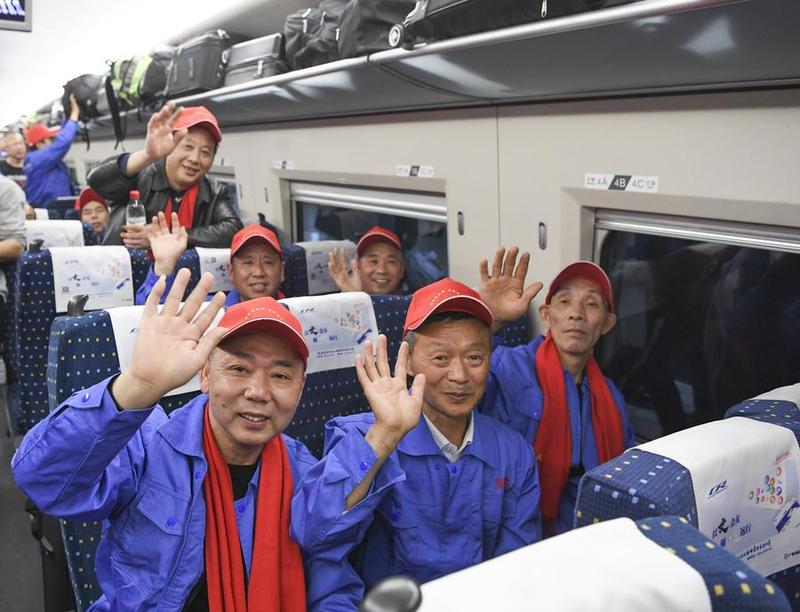
China's migrant worker population is undergoing structural changes and facing challenges posed by an aging workforce, according to a monitoring report recently released by the National Bureau of Statistics.
The average age of the country's 299.7 million migrant workers edged up slightly to 43.2 years last year. Workers over age 50 now account for 31.6 percent of the total, a proportion that has steadily increased in recent years, the report said.
Wu Shuai, a researcher at the Chinese Academy of Personnel Science, attributed the trend to longer schooling in rural areas, which delays entry into the labor market, and the continued aging of middle-aged and older workers already in the workforce.
At the same time, demand is shifting from labor-intensive industries to service-oriented sectors due to ongoing industrial upgrading and the rise of artificial intelligence, Wu said.
The report shows that 27.9 percent of migrant workers are employed in manufacturing, followed by 14.3 percent in construction and 13.6 percent in wholesale and retail. Around 7 percent work in transportation and in accommodation and catering.
In total, 54.6 percent of migrant workers are now employed in the services sector, a 0.8 percentage point increase from last year, while employment in the industrial sector declined to 44.7 percent.
The shift reflects the growing share of services in China's national economy, particularly in fast-growing industries such as logistics and food delivery, which are creating new job opportunities, Wu said.
The transformation of manufacturing, driven by technologies such as robotics and AI, is reducing demand for older and low-skilled workers.
Younger migrant workers are also gravitating toward jobs that offer more flexibility and better working conditions — traits more common in the services sector, she added.
Wu emphasized the need to upskill the workforce to meet the demands of emerging sectors.
More efforts are expected in vocational training for migrant workers, particularly in advanced manufacturing, modern services and newly emerging occupations, where demand is high but skilled labor is in short supply, she said.
According to the report, average monthly incomes for migrant workers continued to rise.
In 2024, they earned an average of 4,961 yuan ($687) per month, up 3.8 percent from the previous year. Workers in eastern China earned the most, averaging 5,368 yuan per month.
Urban-dwelling migrant workers now enjoy an average living space of 24.7 square meters per person, a 0.7 square meter increase from last year.
The report also highlighted progress in education access for migrant workers' children.
The preschool enrollment rate for children age 3 to 5 rose 3.6 percentage points year-on-year to reach 94.5 percent.
In terms of leisure, migrant workers reported a broader range of activities. Internet use and social gatherings increased by 6 and 4.8 percentage points, respectively.
Wu called for stronger urban public services in education, healthcare and culture to better integrate migrant workers and their families into city life.
Ensuring equal access to these services will be critical to helping them truly settle in urban areas, she said.
- Grand Bazaar enters peak tourism season in China's Xinjiang
- CCG warns the Philippines to stop provocations in South China Sea
- 7 killed, 9 missing in Qinghai bridge construction accident
- Central delegation presents gifts to people in Xizang
- Month-long Macao intl fireworks contest to commence in September
- Flash flood in Inner Mongolia claims 12 lives, 1 survives

















